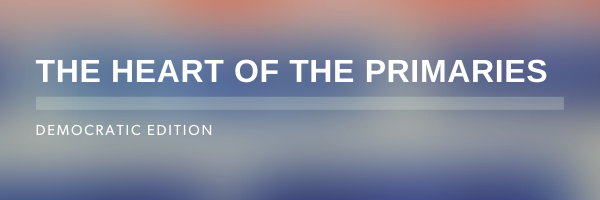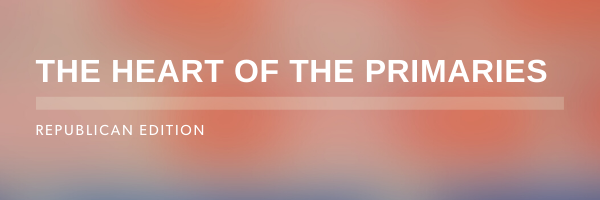Category: Newsletters
-
Heart of the Primaries 2022, Democrats-Issue 12
Posted on

March 3, 2022 In this issue: Texas Democratic primary results roundup, Oregon county parties change rules to endorse challenger in OR-05 Texas results roundup Texas held the nation’s first midterm primaries on Tuesday. Races in which no candidate received a majority of the vote are headed to May 24 runoffs. Here’s a roundup of results…
-
Heart of the Primaries 2022, Republicans-Issue 12
Posted on

March 3, 2022 In this issue: Texas GOP primary results roundup and a Senate leadership disagreement in N.C. Texas results roundup Texas held the nation’s first midterm primaries on Tuesday. Races in which no candidate received a majority of the vote are headed to May 24 runoffs. Here’s a roundup of results from marquee Republican…
-
Voters in three states to decide on changes to the ballot initiative process this year
Posted on
Welcome to the Thursday, March 3, Brew. By: David Luchs Here’s what’s in store for you as you start your day: Voters will decide on legislative proposals adding restrictions to ballot initiative processes in Arizona, Arkansas, and South Dakota in 2022 An update on the Tuesday elections Ohio U.S. House candidate filing deadline passes Voters…
-
Hall Pass: Your Ticket to Understanding School Board Politics, Edition #4
Posted on

Welcome to Hall Pass. This newsletter keeps you plugged into the conversations driving school board politics and governance. Each week, we bring you a roundup of the latest on school board elections, along with sharp commentary and research from across the political spectrum on the issues confronting school boards in the country’s 14,000 school districts.…
-
Ballot Bulletin: Ranked-choice voting barred from state and local elections in Tennessee
Posted on

Welcome to The Ballot Bulletin, where we track developments in election policy at the federal, state, and local levels. In this month’s issue: Tenn. enacts law barring use of ranked-choice voting in state, local elections Wisc. Supreme Court allows circuit court’s ban on ballot drop-boxes to stand for April election Redistricting round-up: Courts in two…
-
Redistricting updates (and, of course, Texas)
Posted on
Welcome to the Wednesday, March 2, Brew. By: Samuel Wonacott Here’s what’s in store for you as you start your day: Redistricting roundup: The latest news from Louisiana and Ohio Texas primary election results President Joe Biden’s approval at 41%, congressional approval at 20% Redistricting roundup: The latest news from Louisiana and Ohio We’re back…
-
Economy and Society: ESG goes to war?
Posted on
Economy and Society is Ballotpedia’s weekly review of the developments in corporate activism; corporate political engagement; and the Environmental, Social, and Corporate Governance (ESG) trends and events that characterize the growing intersection between business and politics. ESG Developments This Week In Washington, D.C., and around the world ESG goes to war? The Russian war in…
-
Disclosure Digest: Idaho legislator introduces bill increasing disclosure requirements
Posted on
Welcome to The Disclosure Digest! Keep an eye out for new editions published on Tuesdays through June 2022. Idaho legislator introduces bill increasing disclosure requirements On Feb. 21, Idaho Sen. Patti Anne Lodge (R) introduced a bill in the Idaho Senate that would require candidates for state office to report contributions over a certain amount…
-
Robe & Gavel: SCOTUS concludes February sitting
Posted on
Welcome to the Feb. 28 edition of Robe & Gavel, Ballotpedia’s newsletter about the Supreme Court of the United States (SCOTUS) and other judicial happenings around the U.S. … Did you hear something? Could it be… changing seasons approach? The first breaths of spring? One can hope. Last week, President Biden nominated U.S. Court of…
-
An update on US Senate retirements
Posted on
Welcome to the Monday, February 28, Brew. By: Samuel Wonacott Here’s what’s in store for you as you start your day: Inhofe announces retirement from U.S. Senate Biden nominates Ketanji Brown Jackson to the United States Supreme Court West Virginia U.S House delegation shrinking from three to two sets up primary between two representatives Inhofe…

